Great names that shaped the future of spermatology
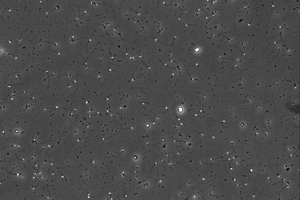 The author has written several blogs during the last few years dealing with aspects such as the history of spermatology and tracking sperm over the last fifty years.
The author has written several blogs during the last few years dealing with aspects such as the history of spermatology and tracking sperm over the last fifty years.
This blog is not a repetition of these aspects but focuses on some key role players who should be remembered for the crucial role they played in shaping the future of spermatology. I write this blog particularly with the younger spermatologists in mind. Understanding current and future developments are deeply rooted in the past history and far too little attention is devoted to its importance.
Where do we start? It is not the intention to begin with van Leeuwenhoek in the 1600s but rather to focus on the last hundred years. Furthermore, I do not intend to present a comprehensive list, so unfortunately many important names may accordingly not be included.
Foremost in the early 1900s is Prof Gustav Retzius who studied sperm structure of more than 400 species with a detail that is hardly comprehensible. Scholars from Cambridge, particularly those associated with the ARC Reproduction Group in Huntingdon Rd deserve special attention. Sir Alan Parkes, known for his research as a reproductive endocrinologist, had a huge influence in supervising many scholars associated with this group. He worked, among others, with Dr Chris Polge and they were the first spermatologists to freeze chicken and bull sperm successfully (1947). Incidentally, their first break through was a huge accident due to the fact that the medium that worked (glycerol) was wrongly labelled. A previous director, Prof Thaddeus Mann (late 1940s and 1950s), was a genius and together with his wife produced a comprehensive book on the biochemistry of semen which is still today a very important reference work. In those early days they indicated fructose to be the predominant sugar in semen and not glucose. Dr Robin Harrison was one of the first investigators to use biochemical and molecular biology approaches to study sperm function and supervised many young investigators. The author was privileged to have worked with Dr Hector Dott, the father of Computer Assisted Semen Analysis (CASA), in the late 1970s in Cambridge and the interactions and lessons learned from Hector Dott, Thaddeus Mann and Chris Polge certainly rubbed off and played a large influence in the development of spermatology and CASA in South Africa.
- Sir Alan Parkes
- Dr Chris Polge
- Prof Thaddeus Mann
Sir John Hammond was yet another Cambridge scholar and was foremost in the development of the postgraduate school in animal reproduction and was the centre and inspiration who attracted workers from every part of the world particulalrly from the 1920s. He was a pioneer in artificial fertilization and with Sir Alan Parkes, among others, contributed to the remarkable series called Marshalls’ Physiology of Reproduction.
- Sir John Hammond
- Sir Robert Edwards the IVF pioneer
- Louise Brown: First IVF baby, now 45y
During the late 1960s and early 1970s, two extremely important pioneers also emerged from Cambridge. Sir Robert Edwards and Dr Patrick Steptoe achieved one of the most significant advances in the history of reproductive medicine through in vitro fertilisation (IVF). They showed that by removing an egg from a woman’s ovary, fertilising it in the laboratory with her partner’s sperm, enabling its early development into an embryo and then transferring it back to the woman’s womb resulted in a successful pregnancy and live birth of baby Louise Brown (1978). Robert Edwards was awarded the Nobel Prize for this research more than fifty years later. Incidentally he was also invited to perform research with Sir Alan Parkes in his early career. The author met Sir Robert Edwards in 1994 in Australia and he was telling me in the most excited tone of voice that the first CatSperm gene for sperm hyperactivation was then just discovered.
Two spermatologists from the USA, Prof Don Fawcett and Dr David Phillips, set the standard for studying sperm by means of electron microscopy over the period 1960-1980. Their studies and interpretation of sperm structure from insects to mammals still remain among the most important landmarks in this field. They managed to combine the highest level of science and art through their publications and magnificent electron micrographs of sperm.
In similar vein, Prof Baccio Bacetti (Italy) and Prof Bjorn Afzelius (Sweden) produced a monograph in the 1970s by literally documenting all studies performed on mainly animal sperm up to that time. Bjorn Afzelius from Stockholm also made the seminal discovery that the absence of dynein arms from sperm tubulin in Kartagener’s syndrome explains the lack of sperm motility in those patients.
Two names that cannot be omitted is that of Dr Ryuzo Yanagimachi from Hawaii, who is now over 90 and still publishing, and Dr Jean Dan from Japan. Yanagimachi must be considered one of the most innovating spermatologists of all times and his success was to ask the right questions and then perform basic simple experiments to come forward with new concepts. For example, he exposed sperm to the rabbit oviduct and discovered the principle of hyperactivation. Dr Jean Dan discovered the acrosome reaction and published this work in 1956.
- Dr Ryuzo Yanagimachi, Honolulu, Hawaii
Dr Tim Glover from Liverpool, Dr Mike Bedford from Harvard and Dr Lennart Nicander from Uppsala, Sweden, greatly advanced our understanding of sperm maturation in the epididymis of many animal species. Prof Åke Franzén from Sweden made the important discovery that sperm of external and internal fertilizers are each designed for a specific fertilization environment and this immensely stimulated research in this field.
- Prof Don Fawcett
- Prof Baccio Bacetti
- Prof Bjorn Afzelius
The 1960s were exciting sperm times and no wonder that the first Symposium on Spermatology (ISS) was held in Sienna, Italy, with the central organizers, Prof Baccio Baccetti, Prof Bjorn Afzelius, Prof Jean Andre, Prof Don Fawcett, Prof Mike Bedford and Prof Hideo Mohri. The very best authorities in the field were invited as guest speakers and this provided an enormous thrust to the development of comparative spermatology research since the 1960s. Thereafter, the ISS series took place every four years with conferences in the USA, Sweden, Japan, France, Australia, Canada, South Africa, Spain and again in Japan and Australia. The last meeting was held in Stockholm in 2018. In recent meetings there has been a new emphasis on sperm biology in the oviduct and the events leading up to fertilization. Dr Susan Suarez, Dr Luca Jovine and Dr Sabine Kölle are among a group of scientists that made significant progress in this field using innovative technologies.
Almost parallel to the ISS was the Biology of Sperm (BoS) meetings held every two years and mainly in the Peak District close to Sheffield, UK, with the main organizers/role players being Prof Tim Birkhead, Prof Bob Moore, Prof Geoff Parker, Dr Rhonda Snook, and Prof Bob Montgomerie among others. The last few BoS meetings have shifted to Stockholm. The focus of BoS meetings was different to the ISS as the main context was how evolution shaped sperm and eggs and sexual selection. One of the main research areas is sperm competition as defined by the father of sperm competition, Prof Geoff Parker. The BoS series has, similarly to the ISS series, been driving engines for research progress in the field of spermatology.
A historical perspective without mentioning the enormous contribution of industries and the technologies developed to study sperm will be incomplete and stretches from remarkable developments in microscopy, flow cytometry and numerous molecular biology applications such as PCR (far too many to mention). One of the most powerful ways to study sperm function is by quantification of advanced motility analysis using CASA and flagellar analysis. Hamilton Thorne (HT) and Microptic (now also a HT company) have been among the major role players in the CASA for semen analysis field. The main founder member of HT is Dr Diarmaid Douglas-Hamilton who sadly passed away in the course of 2023. He has been a visionary who built the HT IVOS, representing the first complete CASA system for semen analysis in one box. This over time served as an inspiration for the very first fully automated system developed by Microptic, namely the SCA SCOPE. These endeavours must also serve as a reminder of the importance of basic scientists and industry holding hands and developing technology together to reach for the stars.
- Dr Diarmaid Douglas-Hamilton
The hard core academic roles played by Dr David Katz and Dr James Overstreet from California, Dr Rupert Amann from Colorado and Drs David and Sharon Mortimer from Vancouver must be acknowledged in the development of CASA.
Viva to the amazing spermatologists mentioned here and to the many outstanding other ones that have not been mentioned simply because of the lack of space but also because the focus was predominantly on the 1900’s.
Prof Gerhard van der Horst (PhD, PhD)
Senior Consultant
MICROPTIC S.L. (A Hamilton Thorne Company)



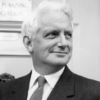
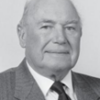
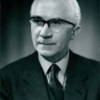
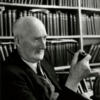
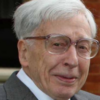


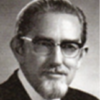

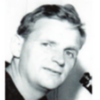
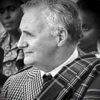
Austin & Chang were pioneers in spermatology. They separately characterized ‘capacitation’. Yana later joined Chang.
Thank you, Chris, for adding these two very important names!!! Space did not allow me to add many other important names too. I emphasized in the blog my apologies for important names that I will miss out on. However, they are indeed exceptional, and I add this reference to put it in perspective (strongly recommend particularly the younger generation of spermatologists to read this):
Chang’s Meaning of Capacitation: A Molecular Perspective
MARIA GRACIA GERVASI AND PABLO E. VISCONTI*
Department of Veterinary and Animal Sciences, ISB, University of Massachusetts, Amherst,
Massachusetts
SUMMARY
Dr. Min Chue Chang’s contributions to the field of reproductive biology set the stage
for the development of the contraceptive pill and in vitro fertilization. Throughout his
publications, Dr. Chang was also able to transmit his view of the fertilization process in
ways that organized research for newer generations of reproductive biologists.
Particularly relevant for the achievement of in vitro fertilization in mammals was
the discovery that the sperm required a period of residence in the female tract to
become fertilization-competent; Dr. Chang and Dr. Austin, in Australia, independently
reported this process, now known as sperm capacitation. This review discusses Dr.
Chang’s views on capacitation, and puts them in the context of recent advances in the
understanding of the molecular basis of this process.
Mol. Reprod. Dev. 83: 860874, 2016. 2016 Wiley Periodicals, Inc.
Received 4 June 2015; Accepted 31 May 2016
Chang and Austin concluded that the sperm must undergo physiological changes in the female tract to acquire the ability to penetrate the egg.
Published online 30 June 2016 in Wiley Online Library
(wileyonlinelibrary.com).
DOI 10.1002/mrd.22663